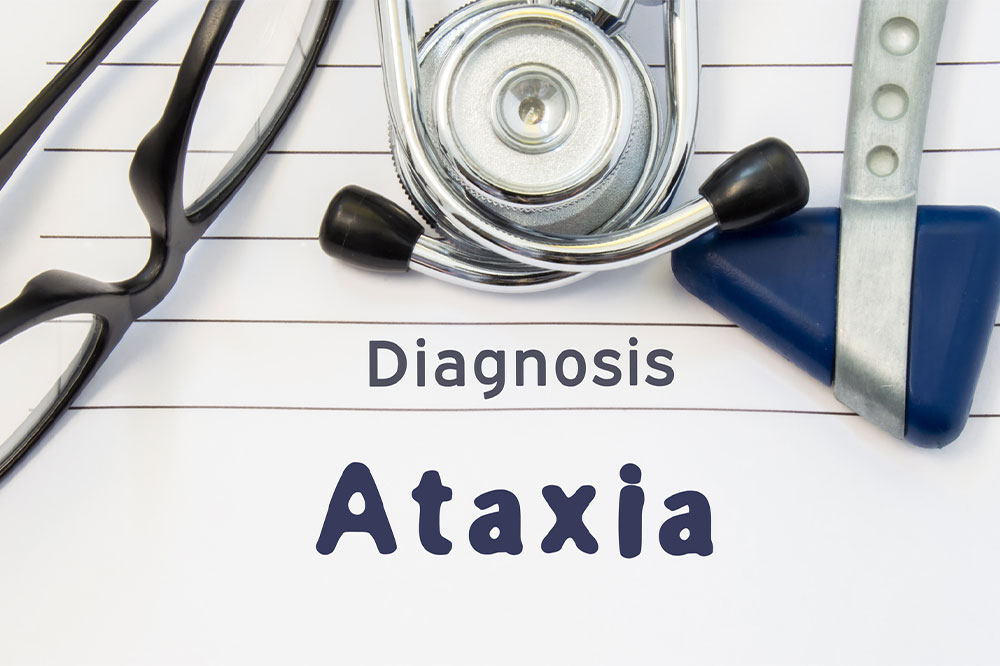
Ataxia – Its causes and management
Ataxia is a degenerative disease that mainly affects the nervous system. As defined in the medical community, cerebellar ataxia, Neuropathy, and Vestibular Areflexia Syndrome (CANVAS) is a slow progressive late-onset form of ataxia, which affects the cerebellum region. The cerebellum controls all movement responses. Any degeneration in this area will affect movement in the fingers, arms, hands, legs, or even the eyes. Common symptoms include poor balance, inability to walk, persistent cough, and difficulty swallowing.
Who is affected?
Ataxia can develop at any stage, right from childhood to adulthood. However, symptoms may form early on or could be delayed depending on how the condition progresses. Patients commonly develop neuropathy with cerebellar ataxia, as the risk of this combination is high among those who develop neurodegenerative disorders. However, CANVAS ataxia is a rare form diagnosed in a tiny population of people diagnosed with such disorders. And the symptoms are caused due to damage done to the cerebellum region of the brain. The symptoms tend to overlap in many chronic health conditions, so the CANVAS ataxia subset could lead to poor coordination while walking, an increased tendency to stumble, difficulty while doing the most basic tasks, change in speech leading to slurring, eye movements that are not under control, and difficulty swallowing.
What can cause ataxia in the cerebellum?
Any injury, trauma, or damage that triggers the degeneration of nerve cells in the cerebellum can lead to cerebellar ataxia. Head trauma is one of the leading causes of cerebellum injury. Persistent damage or prolonged injury could also affect the vestibular functions of the brain that coordinate muscle movement, increasing the risk of CANVAS ataxia. Since it is a progressive neurodegenerative disorder, the incidence of associated neuronal complications is high, especially for neuropathy and vestibular ataxia.
Certain hereditary factors could also lead to mutations that cause a protein imbalance and affect nerve impulses. If the defect develops in the cerebellum region, it can trigger the slow degeneration of healthy nerve cells. As the disease progresses, it affects the muscle’s ability to facilitate movement, leading to loss of balance and motor control, walking difficulties, and slurred speech.
There are also inherent health problems that trigger similar complications and could indicate a developing ataxia problem. Note that the incidence of CANVAS ataxia is so rare that diagnosing the conditions directly based on symptoms is tough. Most symptoms overlap and exhibit these of what one might observe with common neurological disorders. These may include multiple sclerosis, celiac disease, sarcoidosis, and other known autoimmune disorders.
Clinical trials and research studies for CANVAS ataxia have been able to highlight the progression of the disorder. But this research is still in its early stages.
Treatment
There is no definitive treatment for ataxia or any of its subset forms, including CANVAS syndrome. Some forms caused by viral infections or mild to moderate medical complications may resolve on their own without symptoms flaring up. Other forms triggered by genetic mutation or associated neurodegenerative disorders will require a certain amount of medical intervention. The condition can be at best managed with prescriptions, therapies, and dedicated coping mechanisms to improve quality of life.
- Adaptive devices and physical helpers
Neurologists recommend the use of adaptive devices to assist in walking and communication. If ataxia has affected speech, doctors suggest using communication aids to improve speech. When fine motor skills are affected due to reduced nerve impulses, special utensils for eating and handling food help with the action, and in cases where the ataxia affects movement due to cerebellum damage, walkers can be used for support and to improve balance. - Therapy
Therapy can be done for improving speech and physical rehabilitation. Certain occupational therapies also help patients rehabilitate and perform daily tasks. Therapy is ongoing in most cases of ataxia and will vary depending on the onset and severity of symptoms. For conditions like CANVAS ataxia, a combination of multiple simultaneous neurodegenerative problems, treatment and therapy are extensive.
Note that age also affects the patient’s quality of lifestyle. As the body grows old, its ability to sustain cell regeneration diminishes. This is one of the main reasons many neurodegenerative disorders have no proper cure. Also, the slow progressive nature of CANVAS ataxia makes diagnosis unpredictable, and, in the process, treatment gets delayed. It pays to know some of the early signs and symptoms. Doctors then prescribe imaging studies, spinal tap fluid analysis, and genetic testing after reviewing the medical history. In any case, immediate medical intervention is advisable if such symptoms persist.




